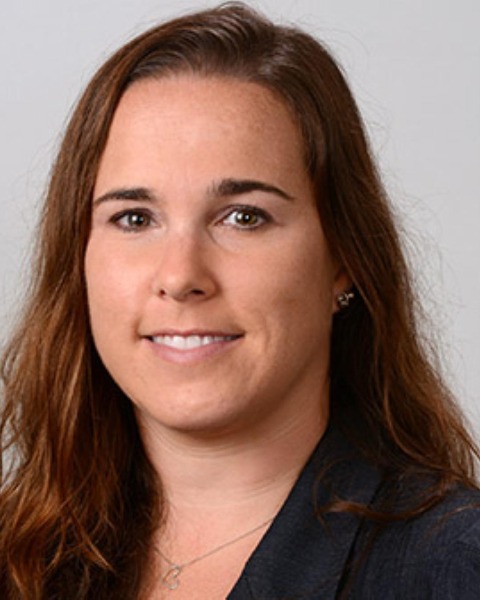Anatomy Education: Teaching Methods & Innovations Posters
Poster: Anatomy Education: Teaching Methods & Innovations Posters
123 - Implementing an Escape Room for OB/GYN Residents Focusing on Anatomy and Procedural Techniques
Saturday, March 23, 2024
5:00pm - 7:00pm US EDT
Location: Sheraton Hall
Poster Board Number: 123
There are separate poster presentation times for odd and even posters.
Odd poster #s – first hour
Even poster #s – second hour
Co-authors:
There are separate poster presentation times for odd and even posters.
Odd poster #s – first hour
Even poster #s – second hour
Co-authors:
Brandi Jarvis, MS, BS - Medical Student, Mercer University School of Medicine; Brendan Mahoney, BS - Medical Student, Mercer University School of Medicine; Janine Chalk-Wilayto, PhD - Associate Professor, Biomedical Sciences, Mercer University School of Medicine; Joseph Slattery, AAS, NRP, CHSE, CHSOS - Assistant Director of Medical Simulation, Medical Practice, Mercer University School of Medicine

Kristjan L. Thompson, Ph.D
Associate Professor
Mercer University School of Medicine
Savannah, Georgia, United States
Presenting Author(s)
Abstract Body : Gamification is an educational technique that enhances learning in fun and interactive ways. Escape rooms, in which players are “trapped” in a room and use clues to escape, have become popular in educational settings. Here we describe our execution of an escape room based on medical knowledge and procedural techniques using simulation trainers to enhance graduate medical education (GME) for OB/GYN residents. In the USA, escape rooms have been implemented in internal medicine, radiology, and emergency medicine programs. To our knowledge, ours is the first escape room used for GME in the OB/GYN specialty.
Four teams, consisting of PGY1-PGY4 OB/GYN residents and third year medical students, completed the in-person escape room, where their knowledge of OB/GYN procedural skills and gross anatomy was tested in nine different stations. Teams had one hour to “escape” and were allowed two hints. To evaluate participants’ perception of the escape room as an educational and team-building exercise, a post-escape room survey was adapted from the validated North Dakota State University Perceptions Exit Survey and non-validated surveys found through literature review. All 16 participants completed the post-escape room survey.
All groups “escaped the room” within one hour, and average time to complete the exercise was 42.8 minutes. The most challenging station required identifying abdomino-pelvic structures from a pre-recorded, looped video captured with a laparoscopic camera. Groups spent the most time at this station and no group answered all of this station’s anatomy associated questions correctly. Responses to survey items measuring participants’ satisfaction, learning, motivation, and general experience scored between 90-95% as agree/strongly agree, and qualitative responses indicated high participant satisfaction. Most participants felt that five of the six ACGME Core Competencies were met. The exception was the “Professionalism” competency, which only 43.75% of respondents indicated was met.
Overall the escape room simulation was well received by range of learners. Participants felt the exercise reinforced knowledge, and promoted collaborative learning and teamwork. With the potential for escape rooms to enhance traditional GME didactics, our future efforts are focused on tailoring the escape room model for wider integration into various local residency programs.
Four teams, consisting of PGY1-PGY4 OB/GYN residents and third year medical students, completed the in-person escape room, where their knowledge of OB/GYN procedural skills and gross anatomy was tested in nine different stations. Teams had one hour to “escape” and were allowed two hints. To evaluate participants’ perception of the escape room as an educational and team-building exercise, a post-escape room survey was adapted from the validated North Dakota State University Perceptions Exit Survey and non-validated surveys found through literature review. All 16 participants completed the post-escape room survey.
All groups “escaped the room” within one hour, and average time to complete the exercise was 42.8 minutes. The most challenging station required identifying abdomino-pelvic structures from a pre-recorded, looped video captured with a laparoscopic camera. Groups spent the most time at this station and no group answered all of this station’s anatomy associated questions correctly. Responses to survey items measuring participants’ satisfaction, learning, motivation, and general experience scored between 90-95% as agree/strongly agree, and qualitative responses indicated high participant satisfaction. Most participants felt that five of the six ACGME Core Competencies were met. The exception was the “Professionalism” competency, which only 43.75% of respondents indicated was met.
Overall the escape room simulation was well received by range of learners. Participants felt the exercise reinforced knowledge, and promoted collaborative learning and teamwork. With the potential for escape rooms to enhance traditional GME didactics, our future efforts are focused on tailoring the escape room model for wider integration into various local residency programs.

